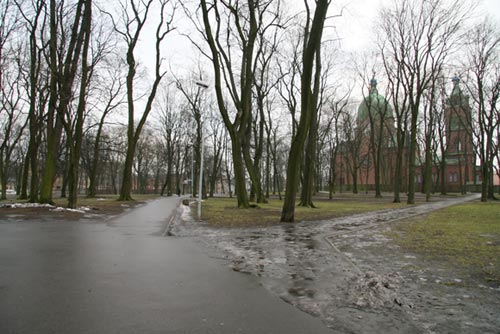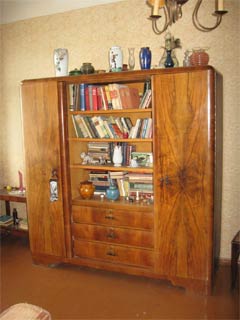Beginning in Australia and moving westward, polls will open at 7 a.m. local time Aug. 23 as Latvians worldwide will vote in the second referendum in three weeks, this time on whether to boost state pension payments.
Voters will be asked whether they support changes to the pension law that would raise the minimum monthly retirement benefit to no less than three times the state welfare payment. Under the amendments, the minimum pension payment could rise to LVL 135.
Using Latvia’s initiative and referendum law, supporters gathered more than 177,000 signatures to force the Saeima to consider the amendments. But the Saeima rejected the amendments, forcing the issue to a national referendum.
Supporters—including the Pensioners and Seniors Party (Pensionāru un senioru partija)—say higher pension payments are needed in part because of high inflation in Latvia. Even if pension payments are increased to at least LVL 135 per month, they would fall short of the living wage, which according to Latvia’s Central Statistical Bureau stood at LVL 161 in June.
Politicians in the ruling government coalition oppose the proposed law, saying they would be hard-pressed to find money in the national budget to fund higher pensions. The People’s Party (Tautas partija), one of the coalition partners, warns on its Web site that passage of the amendments could result in Latvia having to raise the retirement age, reduce pensions or increase social security taxes.
They also note the Saeima has already acted to push up pension payments—although not to the level sought in the pension law amendments.
For the referendum to count, at least half the number of voters in the last parliamentary election, or 453,730 citizens, must cast ballots. For the referendum to be approved, at least half of those have to vote in favor.
In addition to hundreds of polling stations in Latvia, a total of 47 polling stations will be open in 38 other countries. Despite continued uncertainty about the military situation in Georgia and the presence of Russian troops there, the polling station in the Latvian Embassy in Tbilisi for now will be among those open, said Kristīne Bērziņa, spokeswoman for the Central Election Commission in Rīga.
Polling places abroad include:
- Australia: Adelaide Latvian Cooperative Latvian House “Tālava”, 4 Clark St., Wayville, SA; Melbourne Latvian House, 3 Dickens St., Elwood, VIC; and Sydney Latvian House, 32-34 Parnell St., Strathfield, NSW.
- Austria: Embassy of Latvia, Stefan Esders Platz 4, Vienna.
- Azerbaijan: Embassy of Latvia, 44 J.Jabbarli St., Baku.
- Belarus: Embassy of Latvia, 6a Doroshevicha St., Minsk, and Consulate of Latvia, 27a B.Hmelnickogo St., Vitebsk.
- Belgium: Embassy of Latvia, 158 av. Molière, Brussels.
- Brazil: Honorary Consul-General, Rua Jacques Felix 586, Ap. 12, Sao Paulo.
- Canada: Embassy of Latvia, 350 Sparks St., Suite 1200, Ottawa, and Latvian Canadian Cultural Centre, 4 Credit Union Drive, Toronto.
- China: Embassy of Latvia, Unit 71, Green Land Garden No 1A, Green Land Road, Chaoyang District, Beijing.
- Czech Republic: Embassy of Latvia, 3 Hradeshinska St., Prague.
- Denmark: Embassy of Latvia, 17 Rosbaeksvej, Copenhagen.
- Egypt: Embassy of Latvia, 22nd Floor, Office No. 2224, North Tower, Nile City Towers, Cornish El Nil, Ramlet Boulack, Cairo.
- Estonia: Embassy of Latvia, 10 Tõnismägi St., Tallinn.
- Finland: Embassy of Latvia, Armfeltintie 10, Helsinki.
- France: Embassy of Latvia, 6 Villa Said, Paris.
- Georgia: Embassy of Latvia, 4 Odessa St., Tbilisi.
- Germany: Embassy of Latvia, Reinerzstr. 40-41, Berlin, and Consulate General of Latvia, Adenauerallee 110, Bonn.
- Greece: Embassy of Latvia, 38 Vas. Konstantinou Ave., Athens.
- Hungary: Embassy of Latvia, Vas Gereben utca 20, Budapest.
- Ireland: Embassy of Latvia. 92 St. Stephen’s Green, Dublin.
- Israel: Embassy of Latvia, Amot Investments Tower 15th Floor 2, Rehov Weizman, Tel Aviv.
- Italy: Embassy of Latvia, Viale Liegi 42, Rome.
- Japan: Embassy of Latvia, 37-11 Kamiyamacho, Shibuya-ku, Tokyo.
- Kazakhstan: Embassy of Latvia, “Kaskad” Business Center, Kabanbai Batira Ave. 6/1, Office No. 122, Astana.
- Lithuania: Embassy of Latvia, 76 M.K. Čiurlionio St., Vilnius.
- The Netherlands: Embassy of Latvia, Balistraat 88, XX’s-Gravenhage.
- Norway: Embassy of Latvia, Bygdoy Allé 76.
- Poland: Embassy of Latvia, 19 Królowej Aldony St., Warsaw.
- Portugal: Embassy of Latvia, Rua Sacramento a Lapa 50, Lisboa.
- Russia: Latvian Chancery, F. Engelss St. 52a, Kaliningrad; Embassy of Latvia, Capligina St. 3, Moscow; Consulate of Latvia, Narodnaja 25, Pskov; and Consulate General of Latvia, Vasilevskij ostrov, 10 linija 11, St. Petersburg.
- Slovenia: Embassy of Latvia, Ajdovscina 4, Ljubljana.
- Spain: Embassy of Latvia, c/Alfonso XII 52-1, Madrid.
- Sweden: Embassy of Latvia, Odengatan 5, Stockholm.
- Switzerland: Permanent Mission to the United Nations, 137 rue de Lausanne, Geneva.
- Turkey: Embassy of Latvia, Reşit Galip Caddesi, No. 95 G.O.P. Çankaya, Ankara.
- Ukraine: Embassy of Latvia, 6B Ivana Mazepi St., Kiev.
- United Kingdom: Embassy of Latvia, 45 Nottingham Place, London.
- United States: Embassy of Latvia, Massachusetts Ave. N.W., Washington, D.C., and the Permanent Mission to the United Nations, 333 East 50th St., New York, N.Y.
- Uzbekistan: Embassy of Latvia, 16A Lashkarbegi St., Tashkent.
Polls will stay open until 10 p.m. local time. Eligible voters are citizens age 18 and older. To vote, citizens should bring a valid Latvian passport to their closest polling station.
The pension law referendum is the second referendum this month. On Aug. 2, more than 628,000 voters turned out for a referendum on amending the constitution to allow citizens to initiate a recall of the Saeima. However, the number of voters fell short of the required 757,607, which represents half the number of eligible voters. Because the Aug. 2 referendum was on a constitutional issue, the number of voters needed for that referendum to count was higher than for the pension law referendum.
Further information on the referendum process and on how to vote is available on the Web site of the Central Election Commission, www.cvk.lv.





